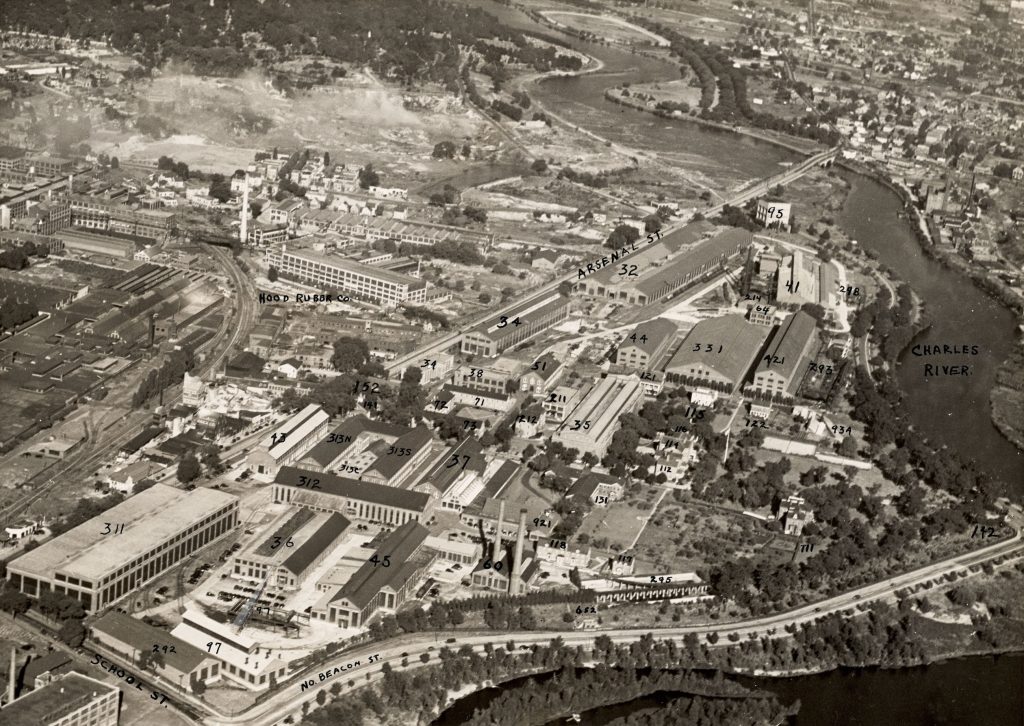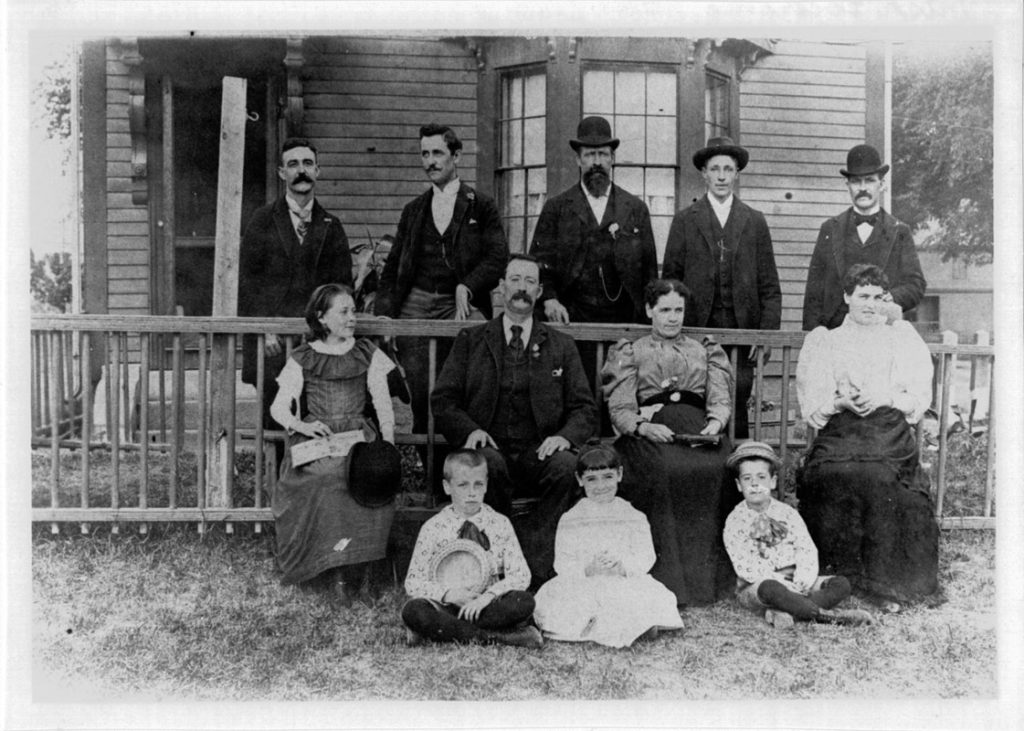
In July of 1630, an English expedition established a colony on the homelands of the Pequossette and Nonantum groups of the Massachusett people. First known as Saltonstall Plantation, Watertown was one of the earliest Massachusetts Bay Colony settlements.
While primarily a farming community, by the 1800s, Watertown was a center for the spinning and weaving of textiles–enterprises responsible for the foundation of the town’s earliest immigrant communities. Watertown’s proximity to Boston, Cambridge, and the Charles River made it an ideal location for manufacturing. Following the War of 1812, the Aetna Mills supplied sailcloth for the USS Constitution, while the establishment of the Watertown Arsenal in 1816 stimulated the production of firearms and cannons.

The town’s growing industrial strength attracted Irish immigrants spurred by the Great Famine in 1846. Many of those migrants found employment in Watertown’s mills and foundries, particularly at the Walker-Pratt Manufacturing Company. Outside of the workplace, Watertown’s Irish community strengthened their ties at St. Patrick’s parish, which served as both a spiritual and cultural center for Irish Catholics.
Perhaps the defining moment of Watertown’s industrial development was the 1896 establishment of the Hood Rubber Factory. Coinciding with the Armenian massacres of 1895-1896, the factory became a magnet for many Armenian refugees. Although Watertown had not previously been a destination for Armenians, its residents spearheaded relief efforts out of the Methodist Episcopal Church. Through newspaper ads and local connections, they facilitated employment and shelter for Armenian refugees. In 1912, Hood Rubber helped establish the Abraham Lincoln House in East Watertown, a settlement house where immigrants could learn English and receive assistance in acclimating to a new country. Following the 1915 Armenian genocide, thousands more sought refuge in Watertown, drawn by the presence of earlier Armenian settlers and job opportunities at Hood Rubber. By 1930, there were more than 3500 Armenians living in Watertown–nearly ten percent of the population.

During these same years, a significant wave of immigration from southern and eastern Europe reshaped Watertown’s demographic landscape. Many were Greeks who, like Armenians, fled economic hardship and oppression under the Ottoman Empire. In 1913, three families laid the foundation for a Greek community, which flourished around the Greek Orthodox Church in the East End. By 1923, the Greek community had expanded to 30 families. While some found employment at Hood Rubber and the Arsenal, which nearly tripled in size during World War I, many Greeks found their place in the restaurant industry. During this period, the Italian population also experienced significant growth. In 1918, the Squilliani Society, dedicated to assisting Italian immigrants, relocated its headquarters to Watertown, solidifying the presence of the town’s Italian community. The end of World War I also saw Italians moving from Boston’s crowded North End to Watertown’s suburbs in search of a wholesome environment for their families.
During World War II, the demand for rubber surged due to military needs, spurring significant economic growth in Watertown. Hood Rubber heavily depended on immigrant labor, with approximately 9000 employees during the war, including Armenians, Greeks, Irish, and Italians. Immigrant women notably contributed to the workforce, especially in the Arsenal’s warehouses. However, the rubber industry’s period of prosperity did not survive post-war competition from foreign manufacturers. Between 1961 and 1971, there was a sharp drop in employment and payrolls, largely attributed to the termination of significant operations at the Arsenal in 1964 and the closure of Hood Rubber in 1969. Watertown’s industrial landscape later shifted as technology-oriented industries emerged, a change accompanied by a new wave of immigration and the continuation of Watertown’s tradition of welcoming newcomers.
The start of the Lebanese Civil War in 1975 resulted in a surge of immigrants from Lebanon, both Lebanese and ethnic Armenians. In response to the growing immigrant population, the Watertown School Department received a federal grant in 1977 to establish the Armenian Bilingual Project, the first of its kind in US public schools. Watertown was also the first US community to offer Armenian language classes in its public high school, starting in 1969 and continuing up to the present. Throughout the 1980s, Watertown continued to attract Armenians and Lebanese, as well as new residents from Syria, Turkey, China, and Iran. This period also witnessed a rise in immigration from Ireland, spurred by unemployment and recession. After the fall of the Soviet Union in 1991, Russians and Romanians settled in Watertown as well.
In the decades that followed, the percentage of foreign-born residents in Watertown rose steadily, from 17 percent in 1990 to 25 percent in 2020. In 2014, the Watertown Citizens Refugee Support Group was established in response to the Syrian refugee crisis, assisting those from the Middle East and South or Central America. As of 2020, the group had worked with 80 refugees in the greater Boston area, demonstrating Watertown’s enduring commitment to providing support and refuge to individuals from diverse backgrounds.
–Ciara Leonard
Works Cited
Beach, Greg. The World and Watertown: Tales of an American Hometown. CreateSpace Independent Publishing Platform, 2017.
Davis, William. “The Armenians of Watertown,” Boston Globe, November 26, 1978.
Hagopian, Roger. Destination Watertown: The Armenians of Hood Rubber. Yeznig Films, 2010.
Hodges, Andrew. Crossroads on the Charles. Digital Scanning Inc., 2005.
Taxiarchae/Archangels Greek Orthodox Church, Parish History
Reddy, Sigrid. Watertown Echoes: A Look Back at Life in a Massachusetts Town. New York: Vantage Press, 2007.

